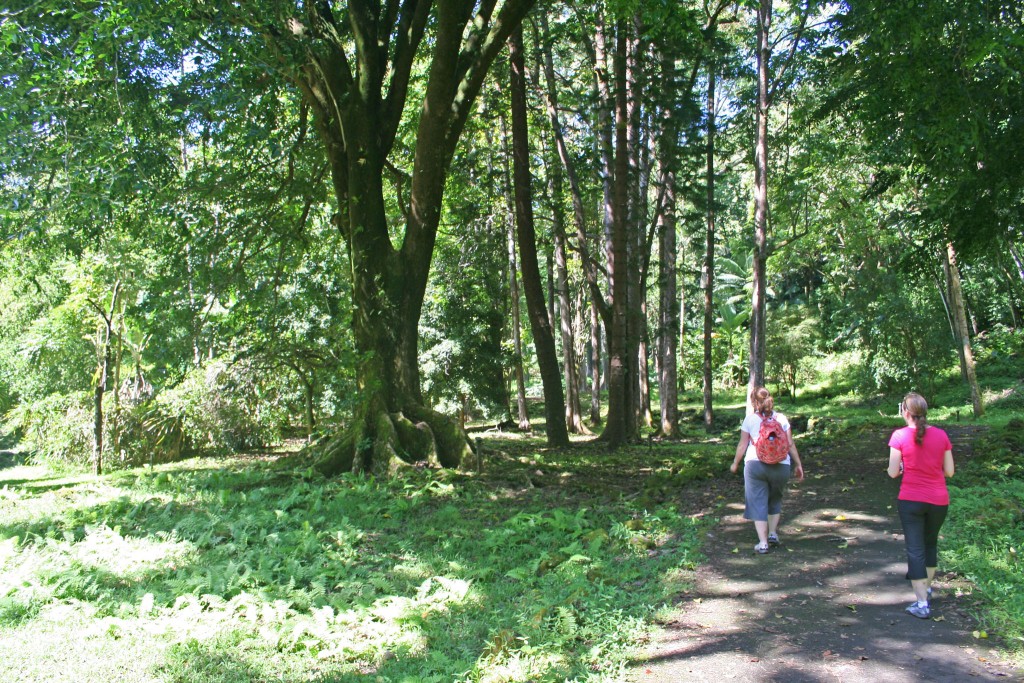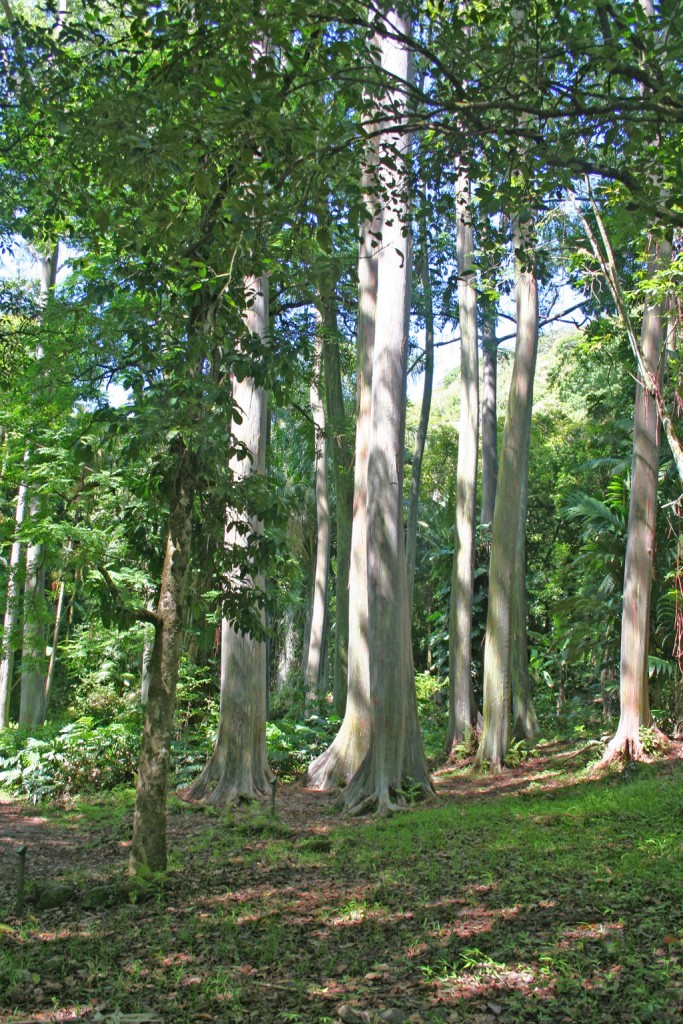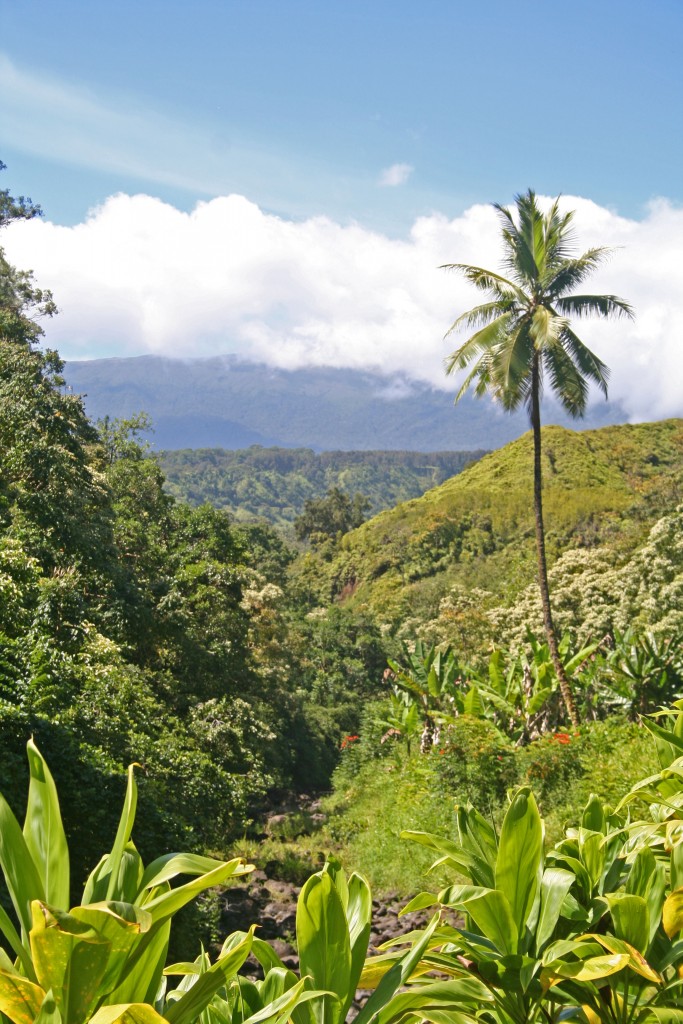Rating: 




In a nutshell: A six acre arboretum and botanical garden with many unique specimens.
Minuses: They can’t get the taro to grow.
Sound-bite: “Let me get a photo of you hugging the tree!”
If you appreciate exotic flora, this small, free-of-charge state-owned arboretum is a must stop on the Road to Hana.
I’m a tree and plant lover, and this arboretum has always held a special place in my heart. While it may not compare in size and careful landscaping to arboretums on the mainland, it has both history and a selection of interesting introduced and native specimens that you won’t see back home.
Virtually everyone who visits the arboretum is attracted to the rainbow eucalyptus – stately trees with beautiful bark and huggable appearance. Also interesting are the blue marble trees, which are impressive rainforest trees native to Australia. The fruit color appears artificial, they look like those giant 50c gumballs that send health-conscious mothers into a frenzy. For the adventurous (and mothers) the fruit is edible, and the blue seeds are just as interesting as the fruit.
Home to roughly 150 specimens (most marked), the arboretum is built along the Pi’ina’au stream on historical Hawaiian lo'i. At the far end of the arboretum there are more types of bananas and ginger than you probably thought existed – look carefully and you’ll notice that each clump of banana are unique varieties.
Following the banana are intact lo’i that have been filled with varieties of taro over the years. Unfortunately these terraces are currently so overgrown with weeds that you can barely make out the walls.
Why is it so hard to grow taro?
Growing taro requires both regular maintenance and cool healthy stream water to pass through the lo’i and return to the stream. EMI diverts the majority of streamflow before it gets to farms, transporting it via open, leaking ditches to Central Maui.
Native Hawaiian and environmental groups have been fighting for decades to restore enough water to bring the streams back to a sustainable and healthy level. In recent years local and federal government have begun to pay attention. There have been encouraging decisions in the direction of restoration, and it has been ruled that EMI must maintain a minimal flow level in this, and other streams.
Read more about EMI
Other important fruit trees such as breadfruit, papaya and mountain apple can be found around the gardens. Walking off the path and along the stream is also a delightful experience – and there are even small pools where you can take a dip when streamflow is sufficient.
The path though the center of the gardens is paved, and turns to dirt as you get closer to the lo’i. Beyond the lo’i you will encounter an easily passed fence and can continue along the stream on a rough trail through the forest – that said, the hike beyond the fence offers little compared to the many spectacular diversions available along the Road to Hana.
Key Info:
Mile Marker: #16.7 (Hana Hwy aka Hwy 360)
GPS Coordinates: 20.857463,-156.149111
Facilities: No facilities
Get directions
View Ke’anae Arboretum in a larger map
(Note: The location is accurate where we have placed the pin, not Google’s label.)
 MauiGuidebook.com
MauiGuidebook.com 

